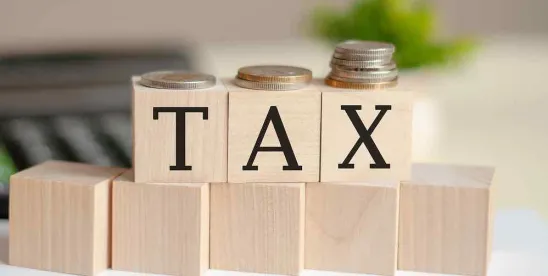On June 28, 2024, the Supreme Court of the United States reshaped the federal tax landscape when it overturned the long-standing Chevron doctrine in Loper Bright Enterprises v. Raimondo, No. 22-451. The Chevron doctrine, a pillar of US administrative law for four decades, required courts to defer to an agency’s reasonable interpretation of an ambiguous statute even where the court concluded that a different interpretation was better supported. As a result, Chevron empowered and encouraged agencies, including the US Department of the Treasury and the Internal Revenue Service (IRS), to promulgate regulations based on statutory interpretations favorable to the agency’s goals. So long as these interpretations did not stray too far from the bounds of reason, the regulations would often survive under Chevron.
By ending the Chevron doctrine, Loper Bright has created new opportunities for taxpayers to challenge federal tax regulations. While taxpayers have long challenged federal tax regulations, particularly after the Tax Cuts and Jobs Act of 2017, Chevron’s deferential regime hampered many challenges to tax regulations because where there was statutory ambiguity or silence, courts generally deferred to agency interpretations. Loper Bright has evened the playing field between taxpayers and agencies because now both must convince courts that their interpretation of the statute is the best interpretation.
For practical purposes, that means:
- Challenges to some regulations that would have failed in the Chevron era may now succeed after Loper Bright.
- Challenges that failed in the Chevron era may be worth reexamining.
- Challenges that were not worth pursuing before Loper Bright may be worth pursuing now given the increased likelihood of success.
IN DEPTH
WHIRLPOOL: A CASE STUDY OF CHEVRON IN ACTION
The Chevron doctrine has often served to advance the IRS’s interests against taxpayers. For example, Chevron played a major role in the US Tax Court’s decision in Whirlpool Financial Corp. v. Commissioner, 154 T.C. 142 (2020). The Tax Court relied on Chevron to reject Whirlpool’s challenge to the manufacturing branch rule in Treasury Regulation Section 1.954-3(b)(1)(ii). (The Tax Court’s decision was ultimately upheld by the US Court of Appeals for the Sixth Circuit on different grounds.)
Employing Chevron’s two-step process, the Tax Court first asked whether Internal Revenue Code (Code) Section 954(d)(2) is ambiguous or silent on the distinction between manufacturing and sales branches. The Tax Court answered affirmatively (“954(d)(2) [could] plausibly envision regulations dealing with any sort of branch” and “there is nothing in the statute that prevents the Secretary from prescribing regulations that also address manufacturing branches”) and then turned to Chevron’s second step, asking whether the Treasury Regulation is a “reasonable interpretation” of the statute. In a brief analysis, the Tax Court, as courts often did, deferred to Treasury and again answered affirmatively. In a final paragraph that underlined the Chevron framework’s looseness, the Tax Court held for the IRS because “whether section 954(d)(2) is viewed as ambiguous or silent,” the regulations are a “reasonable interpretation” of the statute, which is to say that the statute does not “unambiguously foreclose” the interpretation set forth in the regulations.
Not “unambiguously foreclosed” is a low bar, but Loper Bright has raised it. Without the Chevron doctrine, courts can and must employ all traditional tools of statutory interpretation to determine the best interpretation of a statute, regardless of whether the statute is ambiguous or what the IRS’s own views are.
LOPER BRIGHT’S SCOPE: IMPLICIT AND EXPRESS DELEGATIONS
Loper Bright overruled Chevron because the Supreme Court rejected the notion that when US Congress passes an ambiguous or incomplete statute, it intends that agencies will fill in the gaps. On the contrary, the Supreme Court held that when Congress is silent about an agency’s role in a given statute, it is not “implicitly delegating” interpretive authority to the agency. Instead, that authority falls to the courts.
The Code, however, often expressly delegates regulatory authority to Treasury, either through the general grant of regulatory authority in Section 7805(a) or through specific grants in individual Code sections. For example, Section 1061(f) instructs that “[t]he Secretary shall issue such regulations . . . as [] necessary or appropriate to carry out the purposes of this section,” and Section 59A(i) states that the “Secretary shall prescribe regulations . . . necessary to prevent the avoidance of the purposes of this section.”
Loper Bright states that when there is an express delegation of authority to the agency to write regulations, courts will continue to analyze whether the agency is acting within its scope of delegated authority and exercising its discretion consistent with the Administrative Procedure Act. But here, too, the case has significant implications for regulations that purport to rely on general rulemaking authority. In United States v. Mead Corp., 533 U.S. 218 (2001), for example, the Supreme Court stated that Chevron deference is appropriate “when it appears that Congress delegated authority to the agency generally to make rules carrying the force of law, and that the agency interpretation claiming deference was promulgated in the exercise of that authority” (emphasis added). This same approach applies in the context of tax regulations, per Mayo Found. for Med. Ed. & Res. v. United States, 562 U.S. 44 (2011), in which the Supreme Court declined to “carve out an approach to administrative review good for tax law only” and thus applied the standard Chevron doctrine to a tax regulation.
As a result, post-Loper Bright, we expect courts to embrace a far less deferential posture to Treasury regulations that rely on general rulemaking authority such as Section 7805(a) or even specific grants of rulemaking authority to “carry out the provisions” of the statute (or similar formulations). Courts will need to wrestle more closely with whether the regulation at issue exceeds the scope of the delegated authority, including by determining the best interpretation of the statutory text. In other words, taxpayer challenges to regulations that purport to rely on general rulemaking authority are likely to become more prominent, with an increased likelihood of success.
NEW QUESTIONS WHERE REGULATIONS DWARF THE CODE
Many short Code provisions do not expressly delegate regulatory authority to Treasury, but the agency nonetheless promulgates lengthy regulations, typically pursuant to its authority under Section 7805(a) to prescribe “all needful rules and regulations for the enforcement of this title.” For example, Code Section 482 (relating to transfer pricing) is only three sentences and fewer than 200 words, yet its regulations are over 100 pages and almost 50,000 words. This is one example where Treasury has taken its general rule-making authority quite a long way. In such circumstances, it begs the question of whether there will be more challenges to transfer pricing regulations in the post-Loper Bright era. A Code section’s purported “silence” is no longer an implicit delegation of authority to fill the gaps.
More specifically, the validity of the requirement to include amounts attributable to stock-based compensation under the cost sharing regulations has already been on taxpayers’ radars since the Ninth Circuit’s questionable decision in Altera Corp. v. Commissioner, 926 F.3d 1061 (2019). These newer challenges, however, are coming from taxpayers outside the Ninth Circuit. In light of Loper Bright, we anticipate that more taxpayers, including taxpayers in the Ninth Circuit, may come forward to challenge this aspect of the cost-sharing regulations.
IMPACT ON IRS APPEALS
The IRS Independent Office of Appeals (IRS Appeals) historically has been a good option for taxpayers to try to resolve their disputes short of litigation. Unfortunately, an increasing number of taxpayers now feel that IRS Appeals has lost its independence and no longer fairly considers all of the relevant issues. (See Taxpayer Advocate Service, Annual Report to Congress 2023, at 132-42 (raising the “lack of independence” at IRS Appeals as a serious problem that “undermines taxpayer trust.”)) One area of particular frustration is IRS Appeals’ internal policy of not considering regulation validity issues: “In settling cases, Appeals does not apply litigating hazards to arguments raised by a taxpayer regarding the validity of Treasury Regulations . . . .” I.R.M. 8.1.1.3.1(5). Even worse, this internal policy is now included in proposed Treasury Regulation Section 301.7803-2(c)(19). This proposed regulation has been pending finalization since September 2022 and expressly prohibits IRS Appeals from hearing arguments that a Treasury Regulation is invalid. It is difficult to square this policy and proposed regulation with the proposition that IRS Appeals evaluates “litigating hazards,” where the potential invalidity of regulations in some cases may be the primary hazard of litigation from the IRS’s perspective.
In light of the demise of Chevron and the anticipated wave of regulatory challenges, it’s possible that IRS Appeals may reconsider its internal policy. The IRS may not wish to force all of these regulatory validity challenges into court where the IRS and Treasury will be on their least favorable footing in some 40 years. Pushing taxpayers to litigate regulation validity issues may have been a reasonable strategy for the IRS when taxpayers were handicapped by Chevron, but in the Loper Bright era, the results may be more taxpayer-friendly than the IRS had hoped. It is not clear why IRS Appeals should view a regulation validity argument, which now will turn on which interpretation of a statute is the best interpretation, as substantively different from an argument by a taxpayer about the proper application of statutory or regulatory language that does not involve a validity argument. In this new era, a better option would be to allow IRS Appeals to do what it does best: consider hazards of litigation.






 />i
/>i

